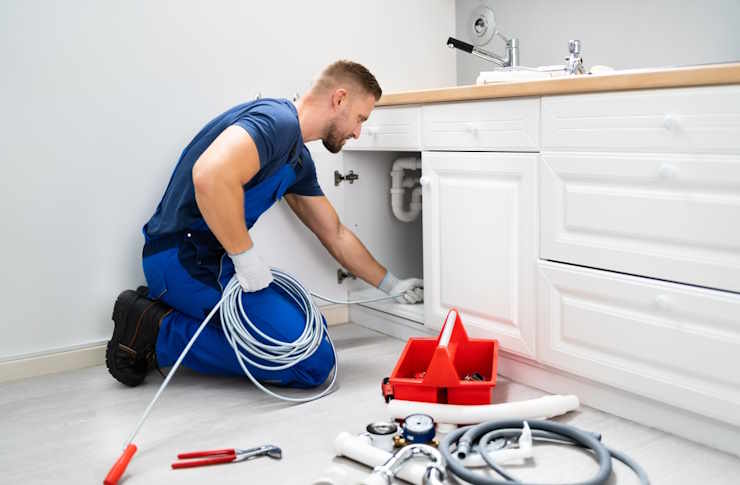Complete Guide to Effective Remediation Solutions
Mold growth in homes poses serious health risks and property damage concerns. Understanding proper removal techniques, prevention strategies, and professional services can help homeowners address this common issue effectively. From identifying problem areas to implementing long-term solutions, comprehensive mold remediation requires the right approach and tools.

Mold infestations can transform a comfortable living space into a health hazard, affecting indoor air quality and potentially causing respiratory issues. Successful mold remediation involves more than surface cleaning – it requires understanding the root causes, proper removal techniques, and prevention strategies to ensure the problem doesn’t return.
Understanding Effective Remediation Solutions
Effective mold removal solutions depend on the extent of contamination and the affected materials. Small areas under 10 square feet can often be handled with household products like bleach solutions, white vinegar, or specialized antimicrobial cleaners. However, larger infestations typically require professional intervention with industrial-grade equipment and containment procedures.
The key to successful removal lies in addressing moisture sources first. Without eliminating the underlying humidity or water intrusion problems, mold will likely return regardless of cleaning efforts. Professional assessment can identify hidden moisture sources behind walls, under flooring, or in HVAC systems.
Effective Mold Stain Removal Solutions
Mold stains present unique challenges as they often penetrate porous surfaces like drywall, wood, and fabric. Simple surface cleaning may remove visible growth but leave behind staining and dormant spores. Hydrogen peroxide-based solutions prove particularly effective for stain removal, as they break down both the mold structure and associated discoloration.
For stubborn stains on hard surfaces, a mixture of baking soda and water creates an abrasive paste that helps lift embedded discoloration. Porous materials like drywall or ceiling tiles with extensive staining may require replacement rather than cleaning, as complete removal becomes nearly impossible once stains penetrate deeply.
Specialized Mold Stain Removal Solutions For Kitchens And Baths
Kitchens and bathrooms face unique mold challenges due to constant moisture exposure and organic matter that feeds mold growth. These areas require targeted approaches that address both removal and prevention. Tile grout, shower enclosures, and areas around plumbing fixtures are particularly susceptible to mold colonization.
Antimicrobial cleaners specifically formulated for bathroom use contain ingredients that not only remove existing mold but also provide residual protection against regrowth. Kitchen applications focus on areas around sinks, dishwashers, and refrigerators where moisture accumulation commonly occurs. Regular maintenance with appropriate cleaning products helps prevent minor issues from developing into major infestations.
Professional Remediation Services and Costs
Professional mold remediation services vary significantly in scope and pricing based on contamination extent and property size. Understanding typical cost structures helps homeowners make informed decisions about DIY versus professional intervention.
| Service Type | Provider | Cost Estimation |
|---|---|---|
| Small Area Remediation (< 10 sq ft) | Local Restoration Companies | $500 - $1,500 |
| Medium Contamination (10-100 sq ft) | ServPro, Rainbow International | $1,500 - $4,000 |
| Large Scale Remediation (> 100 sq ft) | Paul Davis Restoration, Belfor | $4,000 - $15,000+ |
| Mold Testing and Inspection | Independent Environmental Consultants | $300 - $800 |
| Post-Remediation Verification | Certified Industrial Hygienists | $400 - $1,000 |
Prices, rates, or cost estimates mentioned in this article are based on the latest available information but may change over time. Independent research is advised before making financial decisions.
Prevention Strategies and Long-Term Solutions
Successful mold management extends beyond removal to include comprehensive prevention strategies. Maintaining indoor humidity levels below 60% through proper ventilation, dehumidifiers, and HVAC maintenance significantly reduces mold growth potential. Regular inspection of potential problem areas allows for early intervention before major infestations develop.
Waterproofing measures in basements, proper exterior drainage, and prompt repair of leaks address moisture sources that fuel mold growth. Installing exhaust fans in bathrooms and kitchens, using mold-resistant building materials during renovations, and maintaining proper insulation help create environments less conducive to mold colonization.
Comprehensive mold remediation requires understanding both immediate remediation needs and long-term prevention strategies. Whether addressing small stains or extensive contamination, the combination of proper removal techniques, moisture control, and ongoing maintenance provides the most effective approach to maintaining a healthy indoor environment. Professional assessment may be warranted for significant infestations or when health concerns arise from mold exposure.




